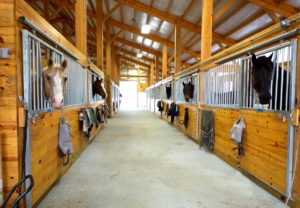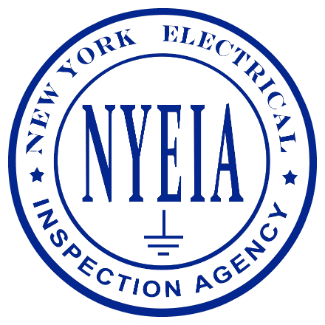 The National Electrical Code (NEC) is a critical document that establishes safe electrical installation standards. Article 547 of the 2023 NEC specifically focuses on agricultural buildings, addressing unique electrical challenges such environments face. Agricultural structures, such as barns, livestock confinement systems, and poultry houses, often present conditions involving excessive dust, moisture, and corrosive materials that can severely impact electrical installations. Article 547 aims to mitigate risks associated with these hazardous conditions, ensuring the safety of both people and animals.
The National Electrical Code (NEC) is a critical document that establishes safe electrical installation standards. Article 547 of the 2023 NEC specifically focuses on agricultural buildings, addressing unique electrical challenges such environments face. Agricultural structures, such as barns, livestock confinement systems, and poultry houses, often present conditions involving excessive dust, moisture, and corrosive materials that can severely impact electrical installations. Article 547 aims to mitigate risks associated with these hazardous conditions, ensuring the safety of both people and animals.
Scope of Article 547
Article 547 applies to specific agricultural buildings or sections of buildings where dust, moisture, or corrosive atmospheres are prevalent. These conditions are particularly common in facilities used for poultry, livestock, and fish farming, which generate litter dust, feed particles, and potentially corrosive vapors from animal excrement. The scope of the article covers two main areas:
- Excessive Dust and Dust with Water: Areas where dust accumulates, including locations where both dry and wet dust particles are present.
- Corrosive Atmosphere: Areas prone to corrosive conditions, such as livestock confinement areas where excrement vapors and moisture combine to create a corrosive environment.
Key Requirements
Wiring Methods (547.20)
Given the challenging environments in agricultural buildings, Article 547 limits wiring methods to those capable of withstanding harsh conditions:
- Type UF (Underground Feeder cable)
- Type NMC (Nonmetallic-Sheathed Cable)
- Type SE cable (copper) (Service Entrance Cable)
- Jacketed Type MC cable (Metal-Clad Cable)
- Raceways designed for areas with excessive dust or corrosive atmospheres
These materials are selected for their durability and ability to resist degradation in environments with high levels of dust, moisture, or corrosion.
Equipment Enclosures (547.22 – 547.24)
To prevent damage and ensure safety, all equipment enclosures, boxes, conduit bodies, and fittings must be designed to keep out dust and moisture. In areas where wet cleaning methods are used (common in livestock areas), enclosures must be weatherproof. Moreover, when corrosion is a concern, materials used for enclosures must be corrosion-resistant. Aluminum and ferrous materials are explicitly mentioned as prone to corrosion in agricultural environments, warranting special consideration.
Ground-Fault Circuit Interrupter (GFCI) Protection (547.28)
GFCI protection, which is essential in preventing electrical shocks, is required in agricultural buildings under certain conditions. Specifically, GFCI protection is mandated for 125-volt, 15- and 20-ampere receptacles in areas such as damp or wet locations, dirt confinement areas, and outdoor spaces. Notably, GFCI protection is not required for areas requiring an equipotential plane, which helps manage voltage differences in livestock areas.
Flexible Connections (547.25)
When flexible connections are needed, dust-tight and liquid-tight fittings must be used to prevent dust and moisture intrusion. Permissible flexible wiring methods include:
- Dusttight flexible connectors
- Liquidtight Flexible Metal Conduit (LFMC)
- Liquidtight Flexible Nonmetallic Conduit (LFNC)
- Flexible cords rated for hard usage
Physical Protection (547.26)
All electrical wiring and equipment that may be exposed to physical damage must be properly protected. In agricultural environments, the potential for damage from rodents or livestock is significant. For example, nonmetallic cables are prohibited in walls and ceilings near livestock confinement areas due to the risk of rodent damage.
Distribution Systems (Part III)
Agricultural buildings often have unique electrical supply setups. Article 547 mandates that electrical supplies to these buildings come from a distribution point, ensuring proper load management and safety. For buildings housing livestock, a site-isolating device is required at the distribution point to allow for easy disconnection of all ungrounded service conductors. The article also covers overhead service requirements and stipulates that grounding and bonding be completed according to rigorous safety standards.
Equipotential Planes and Bonding (547.44)
In areas accessible to livestock, equipotential planes are required to minimize the risk of electric shock due to differences in voltage. These planes must be installed in indoor confinement areas with concrete floors, as well as outdoors in areas where livestock might access metallic equipment. Bonding the equipotential plane to the grounding system ensures that all parts of the electrical system are at the same voltage potential, protecting both animals and humans.
Luminaires and Motors (547.30 – 547.31)
Luminaires and motors must be designed to withstand harsh agricultural environments. They need to minimize the entrance of dust and moisture, with additional protection required in wet locations where luminaires may be exposed to building cleansing water or condensation. Motors must be totally enclosed to avoid damage from dust and corrosive particles.
Conclusion
Article 547 of the 2023 National Electrical Code covers the specific electrical requirements in agricultural buildings. By addressing the unique hazards of these environments, such as dust, moisture, and corrosion, the article provides clear directives on the materials, methods, and practices required for safe electrical installations. Implementing these requirements helps protect the infrastructure, animals, and workers in agricultural facilities, reducing the risk of electrical accidents and prolonging the life of the electrical system. If you have any questions or would like to schedule an electrical inspection, please contact us at New York Electrical Inspection Agency.
